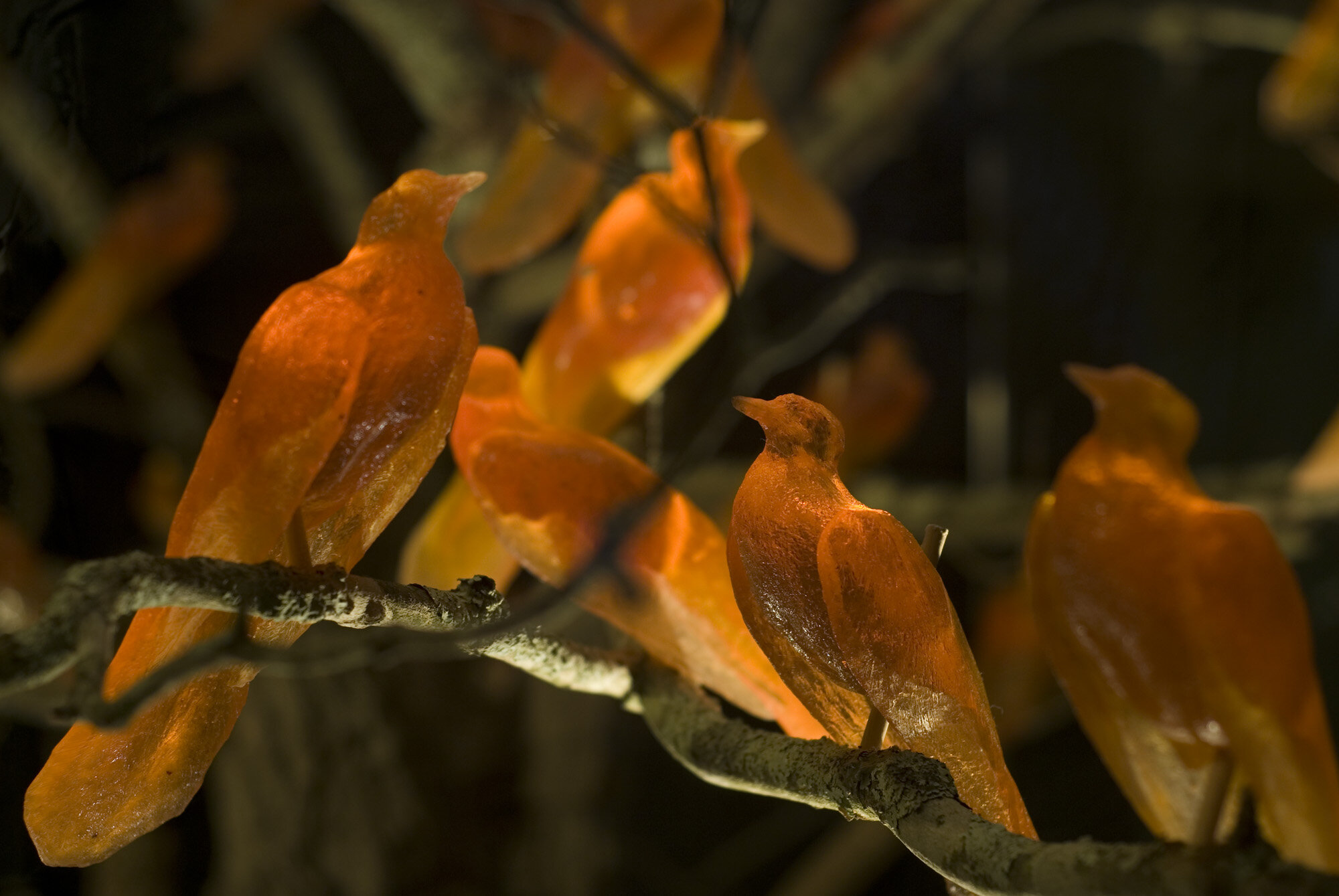
Zugunruhe
“Zugunruhe” is an ornithological term used to describe the phenomenon of nighttime restlessness and agitation displayed by birds at the onset of migration. This installation invokes one of the truly great migratory events in North American ornithology that is now lost to us, the migration of the Passenger Pigeon. Once the most plentiful bird to inhabit North America, it is now most famous for its loss.
A seven-sided cylindrical polygon standing 9 feet high and 15 feet in diameter constructed from two-way architectural mirror is in the space. Within the polygon is a large tree supporting hundreds of amber (copal) casts of Passenger Pigeons. A light source within the structure causes the glass walls to appear transparent from the outside while creating a reflective mirror box affect within.
The walls’ smoky glass creates a distancing effect and echoes the physical materiality of the earliest mirrors made from obsidian and their mystical function as a tool used to look into other dimensions. The tree and birds are multiplied in the mirrored surfaces, conjuring an illusion of a forest and the essence of a Passenger Pigeon migration.
A blown glass spherical vessel modeled after Athanasius Kircher’s (the 17th century polymath) Machina Magnetica Cryptologica is centered in a second space. The vessel contains a tapered brass rod that moves slowly, stopping at intervals and shifting direction periodically as it follows a hypothetical route of a Passenger Pigeon migration in real time. The narrow end of the rod serves as a pointing device that directs the viewer’s attention to the four walls of the gallery space. Upon each wall are excerpts of the eyewitness accounts of naturalists such as Muir, Wilson, and Audubon about Passenger Pigeon migrations.
Dimensions: Variable
2009 - 2010
Materials: Cast copal (amber), wood, two-way architectural mirror, moss, metal, polyester resin, blown and mirrorized glass, moving brass rod, text
Project Venues:
2014 Smithsonian American Art Museum, Washington, D.C.
2009/10 David Winton Bell Gallery, Brown University, Providence, R.I.





